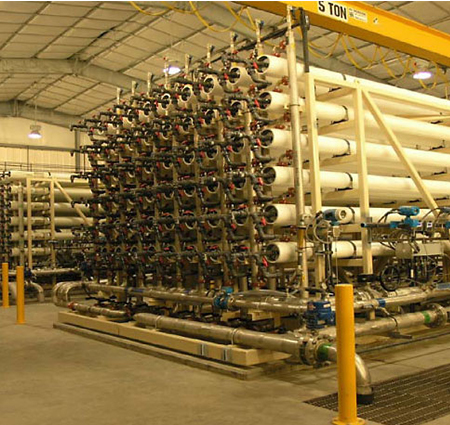 Filtration with membranes is an attractive alternative to sedimentation, adsorption, extraction, distillation, and flocculation. In the membrane filter technique, water is drawn through a thin filter. Filters with a variety of pore sizes are available. Membrane technology does not require any additives or chemicals, and only minimal amounts of energy. These significant advantages are increasing the use of membrane filtration in water treatment worldwide.
Filtration with membranes is an attractive alternative to sedimentation, adsorption, extraction, distillation, and flocculation. In the membrane filter technique, water is drawn through a thin filter. Filters with a variety of pore sizes are available. Membrane technology does not require any additives or chemicals, and only minimal amounts of energy. These significant advantages are increasing the use of membrane filtration in water treatment worldwide.
Water with specific quality requirements is used for human consumption as well as in pharmacological, medical, chemical and industrial applications.
The family of membrane processes is generally classified as microfiltration (MF), ultrafiltration (UF), nanofiltration (NF) and reverse osmosis (RO). Membrane configurations include spiralwrap, tubular, flat sheets and capillary.
Membrane separation processes are used for:
- Desalination of seawater
- Production of process and potable water
- Polishing and demineralisation of boiler feed water and pharmaceutical water
- Rehabilitation and recycling of process and municipal effluent
- As part of an integrated zero liquid discharge process
Widely recognized as the technology of choice for superior water and wastewater treatment, membranes provide a physical barrier that effectively removes solids, viruses, bacteria and other unwanted molecules tubular membranes are ideal for difficult to treat wastewater contaminated with oil, grease, heavy metals, and suspended solids.
